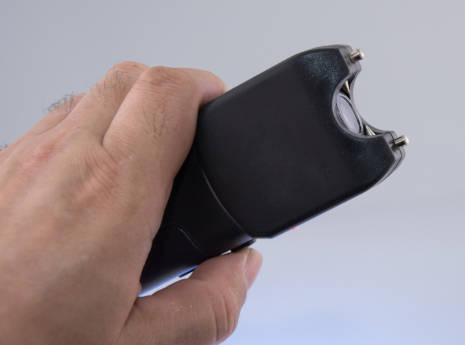Table of Contents
- State Legislatures Accelerate Changes to Stun Gun Regulations
- Impact of Reforms on Personal Safety and Legal Protections
- Challenges and Controversies Surrounding Stun Gun Accessibility
- Policy Recommendations for Balancing Self-Defense Rights and Public Safety
- To Wrap It Up
State Legislatures Accelerate Changes to Stun Gun Regulations
In recent months, a dynamic shift has emerged across multiple states as lawmakers move swiftly to modernize stun gun legislation. These efforts reflect growing recognition of stun guns as crucial tools for personal safety amid rising concerns about violent crime. As a result, numerous states are revisiting existing statutes to expand legal access, reduce regulatory barriers, and clarify ownership restrictions, fostering an environment where responsible self-defense is more attainable.
Key legislative changes include:
- Removal of cumbersome permits to simplify the process for obtaining stun guns
- Expanded carrying rights allowing concealed or open carry in broader public spaces
- Enhancement of training standards ensuring users are educated on safe and lawful operation
- Alignment with Second Amendment protections for non-lethal self-defense options
These reforms underscore a notable trend: states are balancing public safety with individual rights more deliberately, promoting stun guns as effective deterrents without encouraging misuse. Legal experts and advocacy groups alike acknowledge that such legislative momentum could serve as a blueprint for nationwide discussions on non-lethal self-defense policies.
Impact of Reforms on Personal Safety and Legal Protections
The recent wave of state-level legislative changes has significantly enhanced personal safety by expanding the accessibility of stun guns for self-defense. These reforms reflect a growing recognition of non-lethal options as practical tools for ordinary citizens seeking to protect themselves without resorting to firearms. By easing restrictions on possession and carry, governments are empowering individuals to take proactive measures against threats, especially in urban areas where crime rates have surged. This shift not only broadens defensive capabilities but also aligns with a societal move toward safer, less deadly self-defense alternatives.
Legally, these reforms have established clearer protections for stun gun users, reducing the risk of unjust prosecution. Several states have implemented provisions such as:
- Explicit self-defense immunity clauses, ensuring lawful use is distinguished from criminal behavior.
- Permitless carry allowances, enabling users to carry stun guns without cumbersome licensing processes.
- Removal of bans on stun gun possession in public spaces, including schools and places of worship.
These changes fortify the legal framework surrounding electric stun devices, providing citizens with confidence that their right to self-defense is backed by contemporary legal standards.
Challenges and Controversies Surrounding Stun Gun Accessibility
Efforts to expand stun gun accessibility have ignited intense debates regarding public safety and individual rights. Critics argue that loosening regulations could inadvertently increase misuse or violent incidents, especially in densely populated areas where law enforcement faces unique challenges. Additionally, discrepancies in state policies cause confusion among consumers and enforcement agencies alike, complicating compliance and risking unintended legal consequences for users traveling between states. These concerns highlight the tension between empowering citizens for self-defense and ensuring community protection without escalating conflict.
Key points fueling ongoing controversies include:
- The potential for stun guns to be used aggressively, rather than defensively.
- Disparate requirements for background checks or permits that vary widely by jurisdiction.
- The challenge of ensuring purchasers receive proper education on safe use and handling.
- Legal ambiguities surrounding stun gun possession in schools, public spaces, and private property.
Policy Recommendations for Balancing Self-Defense Rights and Public Safety
To ensure the responsible expansion of stun gun self-defense laws, policymakers should adopt a balanced approach that addresses both individual rights and community safety. This involves implementing comprehensive training and certification requirements for users, ensuring they understand safe handling and appropriate usage conditions. Additionally, establishing clear guidelines on where and when stun guns can be lawfully carried or deployed helps reduce misuse and supports law enforcement in maintaining public order.
Moreover, collaboration between state regulators and public safety officials is crucial for ongoing evaluation of these laws’ impact. Key recommendations include:
- Regular reporting and data collection on stun gun-related incidents to monitor trends and inform future amendments.
- Public awareness campaigns highlighting responsible self-defense practices and legal boundaries.
- Enhanced background checks to prevent access by individuals with violent criminal histories.
To Wrap It Up
As state-level reforms continue to shape the legal landscape surrounding stun gun possession and self-defense, policymakers and stakeholders remain attentive to balancing public safety with individual rights. With more states revising regulations to expand lawful access and clarify legal protections, the evolving framework highlights a nationwide shift towards empowering citizens in personal security measures. Observers will be closely monitoring the impacts of these reforms on crime rates and public safety outcomes in the months and years ahead.Check Our Other Blogs
- StunGun – Your Trusted Source for Stun Guns, Laws, and Self-Defense Tips
- PepperSprayLaws – Your Trusted Resource for Pepper Spray Information
- StunGunLaws – Your Trusted Guide to Stun Gun Legality and Safety





